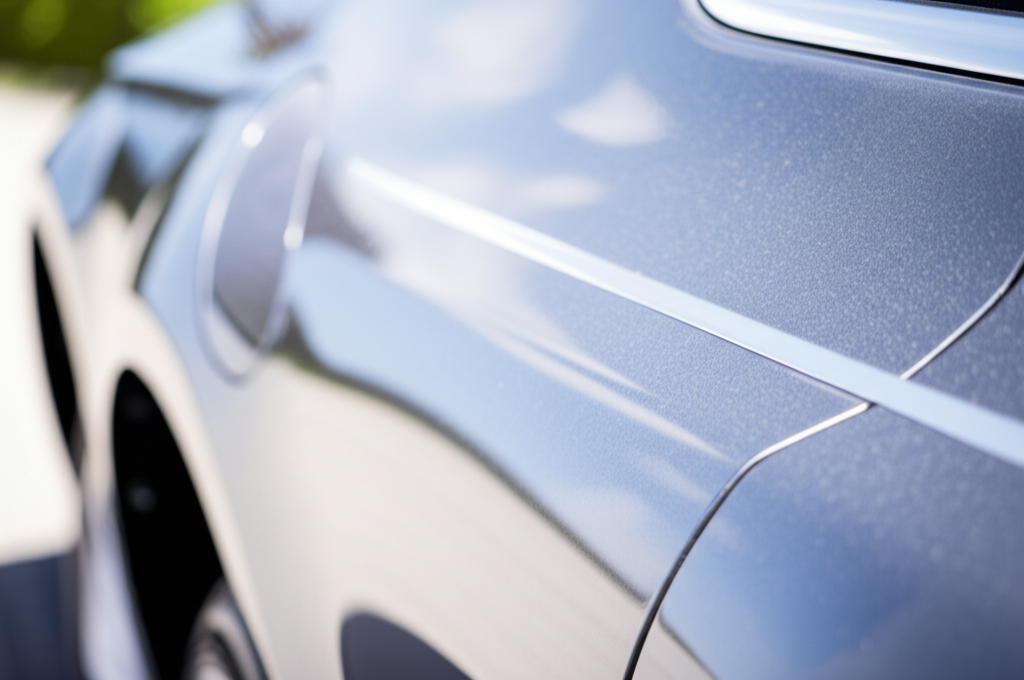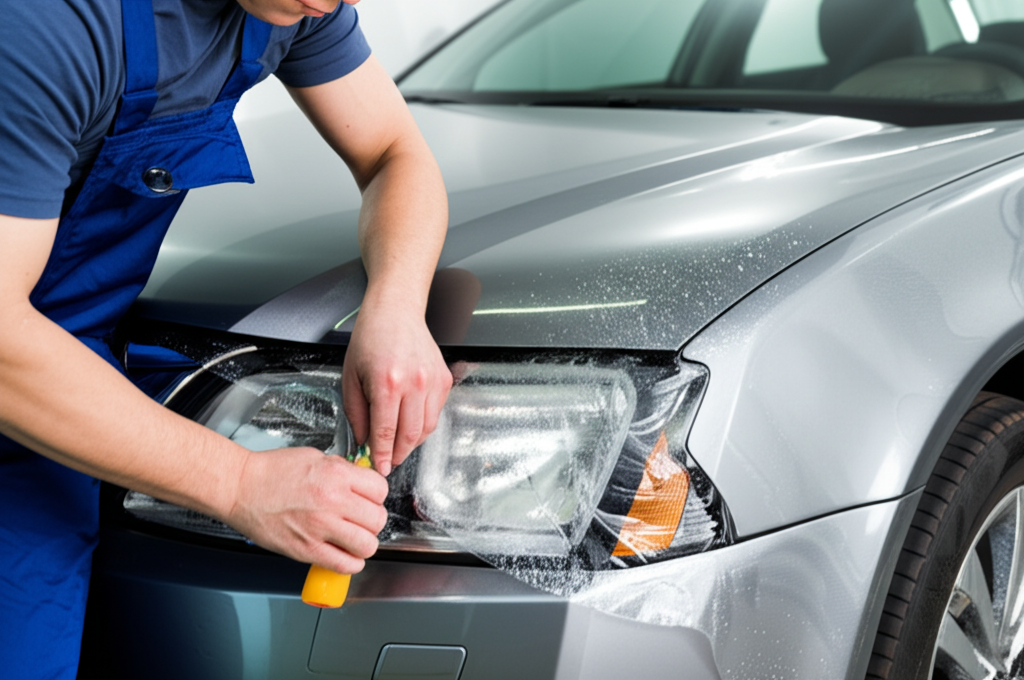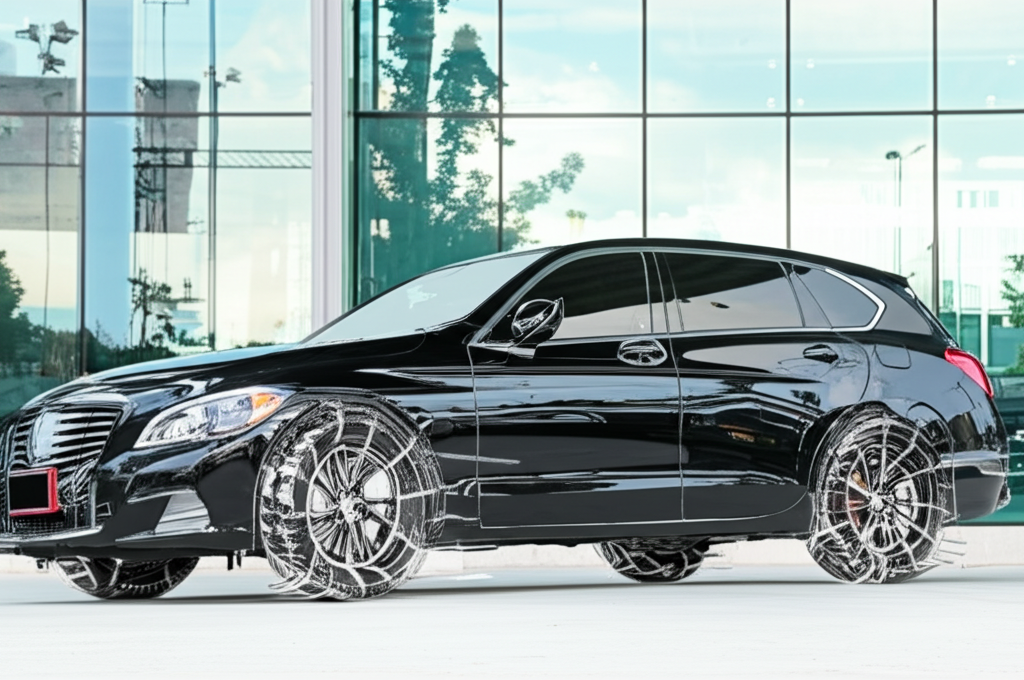Owning a car in Thailand is a dream for many. It represents freedom, convenience, and often, a significant investment. Whether navigating the bustling streets of Bangkok, cruising the scenic coastal roads, or managing the daily commute, your car is a valuable asset. But with that joy comes a constant worry: keeping that beautiful paintwork pristine. Every journey exposes your car to potential hazards – rogue pebbles kicked up on the highway, careless door dings in tight parking spots, annoying swirl marks from washing, the relentless Thai sun fading the colour, and the unavoidable minor scrapes of urban driving. You wash it, you wax it, but the fear of that first deep scratch, the one that ruins the perfect finish and instantly lowers its resale value, is always there. You’ve probably heard about paint protection options, maybe even seen cars with a glossy, seemingly invisible shield. You want to protect your investment, especially the precious original factory paint, but you’re on a budget. You hear about TPU Paint Protection Film (PPF) and wonder: is it just another expensive luxury, or could it be the smart, one-stop solution to preserve your car’s value and your peace of mind?

Meet Khun Viroj: Protecting His Investment on a Budget
Let’s talk about Khun Viroj. He recently bought a reliable, nearly-new Honda City – his pride and joy and a crucial tool for his sales job, which takes him all over central Thailand. He loves the car’s sharp look and knows maintaining its appearance is key to its future resale value. However, his budget was tight after the purchase. He cringed every time he heard gravel ping off the bonnet or navigated a crowded market street. He initially considered a standard vinyl colour wrap, thinking it might offer some basic protection while changing the look. But research revealed vinyl is primarily cosmetic and doesn’t offer significant impact resistance. Repainting damaged panels later would be costly and would never truly match the original factory finish, a big red flag for potential buyers down the line.
Viroj started reading online forums and talking to car care professionals. The term “TPU PPF” kept coming up. He saw videos demonstrating its self-healing properties – minor scratches disappearing with heat! He learned about its superior resistance to rock chips, stains, and UV damage compared to cheaper PVC films or vinyl wraps. The initial price quote for a full front-end TPU PPF application was higher than he’d initially budgeted for protection. He hesitated. Was it overkill for a Honda City? Could he justify the cost?
After much thought, Viroj considered the long-term implications. How much would a few noticeable rock chips and scratches deduct from the resale price in 3-5 years? How much would repainting the bonnet and bumper cost? Suddenly, the upfront cost of high-quality TPU PPF started to look less like an expense and more like an insurance policy for his car’s value. He decided to invest in protecting the most vulnerable areas: the full bonnet, front bumper, fenders, and side mirrors. The professional installation took a day, and the result was incredible. The film was virtually invisible, enhancing the car’s natural gloss. Driving became less stressful. He no longer winced at every truck he passed or every tight parking manoeuvre. His Honda City looked showroom-fresh, and he knew the original paint underneath was safe, preserving its maximum value for the future.

Knowledge Corner: TPU PPF vs. “Regular” Film – What’s the Real Difference?
When we talk about “regular film,” we often mean older PVC (Polyvinyl Chloride) films or standard vinyl wraps primarily designed for changing colour or advertising. While they offer a minimal barrier, they are fundamentally different from modern TPU (Thermoplastic Polyurethane) Paint Protection Film. Let’s break down the key distinctions:
| Feature | TPU PPF (High-Quality) | “Regular” Film (PVC/Vinyl Wrap) |
|---|---|---|
| Material | Thermoplastic Polyurethane | Polyvinyl Chloride or Cast/Calendered Vinyl |
| Primary Function | Paint Protection (Impact, Scratch, Stain, UV) | Cosmetic Colour Change, Advertising, Minimal Scratch/UV Barrier |
| Protection Level | Excellent resistance to rock chips, deep scratches, insect acids, bird droppings, UV fading. Often features ‘self-healing’ for minor swirls/scratches. | Basic protection against very light scratches, sun exposure. Limited impact resistance. No self-healing. |
| Key Feature | Self-Healing Top Coat (minor scratches disappear with heat) & Superior Impact Absorption | Colour/Finish Variety (for vinyl wraps) |
| Clarity & Finish | Optically clear, high gloss (or matte options), enhances original paint. Virtually invisible when properly installed. | Can have good clarity initially but may develop ‘orange peel’ texture. PVC can become brittle. Vinyl wrap finish depends on the product. |
| Durability & Lifespan | 5-10+ years with proper care. Resistant to yellowing and cracking (high-quality brands). | 2-5 years typically. PVC can yellow, crack, or shrink over time, especially in harsh sun like Thailand’s. Vinyl wrap lifespan varies. |
| Removal | Generally cleaner removal, less likely to damage underlying paint if removed correctly within its lifespan. | Can sometimes leave adhesive residue or potentially lift clear coat, especially on lower quality films or repainted surfaces. |
| Price Range (Thailand Market Estimates) | Higher upfront cost (e.g., 15,000 – 80,000+ THB depending on coverage and car size/complexity) | Lower upfront cost (e.g., 5,000 – 30,000+ THB for basic PVC/Vinyl, depending on coverage and type) |
| Ideal User | Owners seeking long-term, high-level protection for original paint, focused on preserving value and appearance. Wants a “set it and forget it” solution. | Owners looking for temporary cosmetic changes, basic protection on a tight budget, or short-term applications like advertising. |
The table clearly shows that while TPU PPF commands a higher initial price, it offers significantly more robust and durable protection. It’s designed specifically to absorb impacts and resist the kind of damage that permanently mars your paintwork and hurts resale value. The self-healing technology is a game-changer, keeping the film (and therefore your car) looking newer for longer. Regular films simply don’t offer this level of defence or longevity.
Voices from the Road: Thai Owners Share Their Experience
Don’t just take our word for it. Here’s what other car owners in Thailand, who were initially concerned about the cost, have to say after choosing TPU PPF:
“I own a Toyota Fortuner and drive frequently between provinces. The highways can be brutal on the front end. I was quoted quite a bit for full front TPU PPF and almost backed out. But thinking about the cost of repainting just the bonnet after a few years of rock chips made me reconsider. It’s been two years now, the film looks great, no yellowing, and it has definitely saved my paint multiple times. My stress levels while driving behind trucks have gone way down!” – Khun Somchai, Bangkok
“My Mazda 2 is my baby. I park outdoors and was worried about bird droppings etching the paint and general scratches. I went for a partial TPU kit (bonnet, bumper, mirrors). The cost felt significant for a small car, but the peace of mind is priceless. Washing is easier too, bugs and tar wipe right off the film. Knowing the original paint is perfect underneath makes me happy every day.” – Khun Malee, Chiang Mai
“I was skeptical about ‘self-healing’. Seemed like marketing hype. But after getting a light scratch on my fender from a bicycle handlebar in a condo parking lot, I was upset. Left the car in the sun for a few hours as the installer suggested, and the mark literally vanished. I was amazed! TPU PPF isn’t cheap, but it works, and it protects my car’s value.” – Khun Adisorn, Phuket
The common theme? Initial budget concerns transformed into long-term satisfaction and relief. They see TPU PPF not just as a film, but as a shield that guards their investment and reduces daily anxiety.
Ready to Protect Your Car and Its Value?
Investing in TPU Paint Protection Film is about playing the long game. It’s about understanding that the slightly higher upfront cost is often significantly less than the cost of future repairs (like repainting panels) or the financial hit you take from visible paint damage when it’s time to sell your car. Preserving that flawless factory paint is one of the single best ways to maintain maximum resale value.
If you’re tired of worrying about scratches, stone chips, and environmental damage diminishing your car’s look and worth, TPU PPF offers a genuine, durable solution. Want to find out how affordable this peace of mind can be for your specific vehicle? Get a personalized consultation and quote from professionals who understand the unique challenges of driving in Thailand.
📱 Want to learn more about car wrap & paint protection?
Feel free to reach us on LINE:

🌐 Official Website: https://tpuwraps.com
Frequently Asked Questions (FAQ)
- Q: Is TPU PPF really worth the cost for a non-luxury car in Thailand?
- A: Absolutely. Depreciation affects all cars. Preserving the original factory paint is crucial for maintaining the highest possible resale value, regardless of the car’s initial price. Damage like rock chips, deep scratches, and paint etching affects buyer perception and negotiation power for any vehicle. TPU PPF protects this value, making it a smart investment even for popular models like Toyotas, Hondas, Mazdas, etc.
- Q: How long does the installation take?
- A: Installation time depends on the coverage amount (e.g., front end only vs. full car) and the complexity of the vehicle’s shape. Typically, a partial front installation might take 4-8 hours, while a full car wrap could take 1-3 days. Reputable installers take their time to ensure a flawless, edge-wrapped finish.
- Q: Will high-quality TPU PPF turn yellow in the strong Thai sun?
- A: Modern, high-quality TPU films from reputable manufacturers are specifically designed with UV inhibitors to resist yellowing, cracking, and peeling, even in harsh climates like Thailand’s. Cheaper, older technology films (especially PVC) are more prone to this. Always choose a quality brand with a warranty against yellowing.
- Q: What kind of maintenance does TPU PPF require?
- A: Maintenance is simple. You can wash and wax your car as usual. In fact, the PPF’s hydrophobic properties often make washing easier. Avoid using abrasive polishes or harsh chemicals directly on the film. Regular washing to remove contaminants like bird droppings or insect acids promptly is recommended, just as it is for unprotected paint.
- Q: Can installing PPF actually increase my car’s resale value?
- A: While it might not add a specific premium amount, having well-maintained, protected original paint significantly boosts your car’s appeal and helps you achieve a higher price compared to an identical car with visible paint damage. Buyers value cars that have clearly been cared for, and perfect paint is a major indicator of good ownership. It makes your car easier and faster to sell.
The Smart Choice for Long-Term Value
Choosing how to protect your car in Thailand involves balancing cost, effectiveness, and long-term value. While cheaper films and wraps have their place, they simply don’t compare to the protective qualities and durability of genuine TPU Paint Protection Film. For the budget-conscious owner who fears depreciation and wants to truly protect their original paint in one go, TPU PPF emerges as a strategic investment.
It’s not just about preventing scratches today; it’s about safeguarding your car’s aesthetic appeal and financial worth for years to come. It’s about transforming the anxiety of potential damage into the confidence of knowing your investment is shielded by the best technology available. Make the smart choice, protect your paint, preserve your value, and enjoy driving your car without the constant worry.
